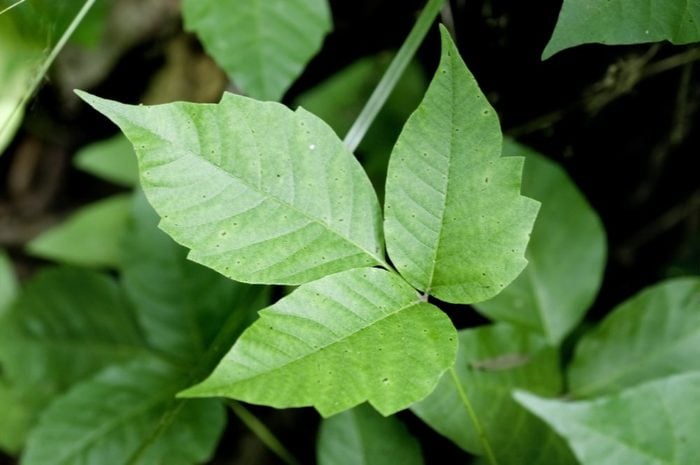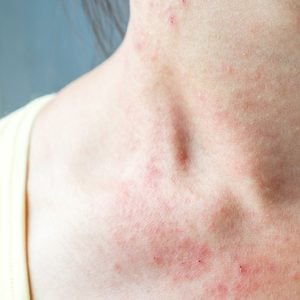What All Canadians Need to Know About Poison Ivy

Poison ivy can be found in every province except Newfoundland. Below, find out how to prevent exposure to poison ivy, and what to do to get relief from symptoms fast.
Seven out of 10 people are allergic to poison ivy, making this the world’s most common allergy. People who have the allergy are sensitive to urushiol, an irritating resin that’s found in poison ivy, poison oak and poison sumac. If you so much as brush one of these plants, urushiol can get on your skin. Within as little as two hours, you’ll develop an itchy rash that will have you scratching for three weeks or more. You can also get the rash by touching clothes or other items that have been contaminated with urushiol. And if there’s urushiol on your fingers, you’ll be spreading the rash around your body every time you scratch.
Home remedies for poison ivy
- No one would knowingly touch a toxic plant, yet generations of even sharp-eyed outdoors people, not to mention kids wandering in the woods, have picked up the itch. If you know you’ve been exposed, you may be able to wash off the allergy-inducing urushiol before it’s too late. And there are many ways to ease the itching and dry the blisters if you do get poison ivy. But avoidance is by far the best approach, especially if you’re one of those people driven nuts by itching.
- Run for the shower, or the nearest creek, if you’re hiking, and wash away the resin before the allergic reaction takes hold. Once you come into contact with poison ivy, the clock starts ticking: You have about 15 minutes to get rid of the urushiol. Use soap and warm water, if they’re available. If you have a choice of soaps, use one that does not contain moisturizers. Skip the washcloth, since it can spread the oil around your body.
- If it’s impossible to wash right away, clean your skin with rubbing alcohol to dissolve the urushiol. If none is handy, you can use any product (or beverage) that contains alcohol.
- If you know what the jewelweed plant looks like (it has tall, translucent stems and hanging, trumpet-shaped yellow or orange flowers) and there’s one growing nearby, crush a handful of the leaves and stems and smear the juice on the affected area. Also known as impatiens and touch-me-not, this plant sometimes grows near poison ivy. There is some research to support the old folk notion that it works against poison ivy rash.
- Slice a leaf of a fresh aloe vera plant, scoop out the gel, and apply to the affected areas. Aloe is not only for sunburn; its anti-inflammatory and antibacterial properties make it great for poison ivy as well. Commercial aloe vera gel products are fine if they are made mostly from pure gel from the plant.
- Pick a few leaves from the common lawn weed plantain, wash them, mash them, and apply as a poultice to the affected skin. Plantain contains a chemical (called allantoin) that is anti-inflammatory and antimicrobial.
Stop the spread of poison ivy
- Wash the clothes you were wearing when you touched poison ivy in the washing machine with warm water. This should get out all the urushiol so the rash won’t spread.
- Rinse off your shoes. If you were wearing washable sneakers when you came into contact with the plant, put them through a separate cycle after washing your clothes.
- Dogs and cats don’t get poison ivy, but their fur can become coated with urushiol. So if Fido followed you into the woods, you can either avoid him for the next few days or give him a bath in soapy water. The bath is a real chore, however, since you’ll have to wear rubber gloves and a raincoat to avoid getting urushiol on your skin.
Remedies to relieve poison ivy symptoms
- Use a vinegar compress to dry the rash and relieve itching. Mix a half-cup white vinegar with 1-1/2 cups water. Chill in the refrigerator. When you need cool relief, moisten a cloth in the solution and press it onto the rash.
- Dab calamine lotion onto the rash. This classic poison ivy remedy relieves itch and will help dry up blisters. If you find the lotion too runny, just mix in a little cornstarch.
- Soak a cloth in cold milk and hold it against your skin. Cold milk is more soothing to itchy skin than cold water. Exactly why milk relieves itching is unknown, but perhaps it’s the milk fat.
- Using a cotton ball, treat your rash with witch hazel, which has a great reputation as a skin soother. The kind that comes in an alcohol solution cools your skin as it evaporates.
- Moisten a plain old tea bag (black or green, it doesn’t matter) and apply it to the itchy skin. The tannic acid in tea, which is astringent, helps contract inflamed tissue, and relieve the itching.
- Take a warm bath to which you’ve added a few tablespoons of colloidal oatmeal or plain oatmeal ground in a blender. The oatmeal will help dry a rash that has started to blister, and also relieves the itch. Be careful when getting out—oatmeal makes the tub very slippery.
- To dry out the rash, relax in a bath containing Epsom salt. Follow the label directions.
Prevent poison ivy
- Whenever venturing out into the wilds where you may come into contact with poisonous plants, wear long pants and a long-sleeved shirt.
- Get a plant-identification book, and learn to recognize poison ivy, oak, and sumac. Many people recognize poison ivy for its “leaves of three.” But they may fail to recognize that poison ivy can grow as a shrub or tree-clinging vine as well as a ground cover. In the spring, its leaves are reddish. Late in the season, it bears pale white berries. Learn more about what the Government of Canada has to say about poison ivy.
- Before going out, rub some Stokogard outdoor cream on exposed skin. This claylike lotion, available on the Internet, forms a protective barrier that guards skin against urushiol.
- Don’t go near any burning brush pile. If there’s poison ivy in the pile, the oil takes to the air and can get into your lungs. You can develop a serious lung infection, as well as a rash over your entire body.
When to see your doctor
If you’re in extreme discomfort, or if you have severe blistering, swelling, or redness, call your doctor. You should also alert the doctor if you might have inhaled the smoke of burning poison ivy plants, particularly if you become short of breath. Seek medical attention at once if the rash is on your eyes, nose, mouth, throat, or genitals.







